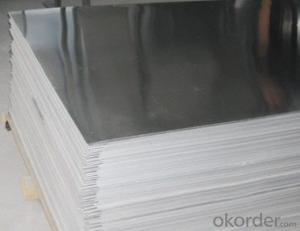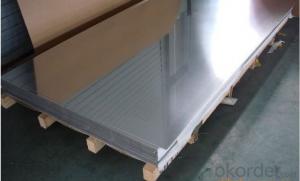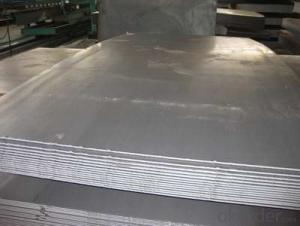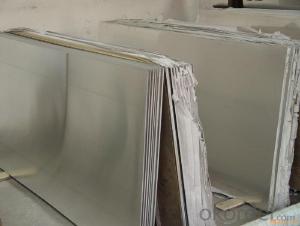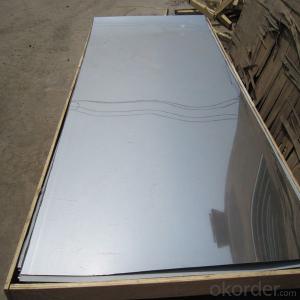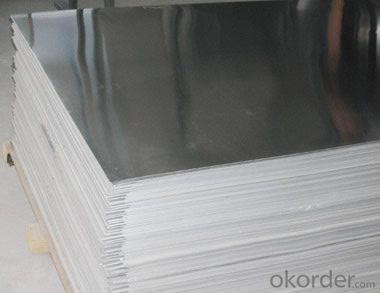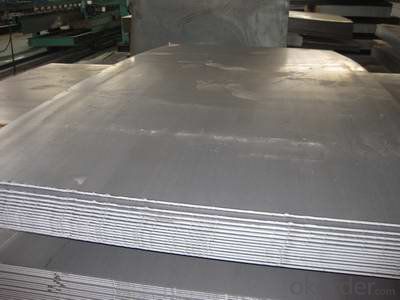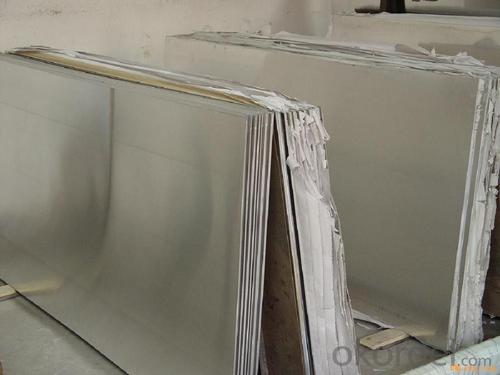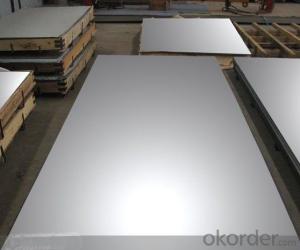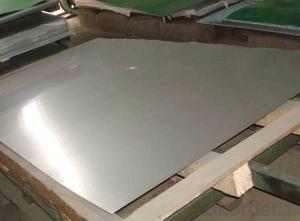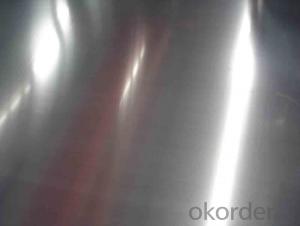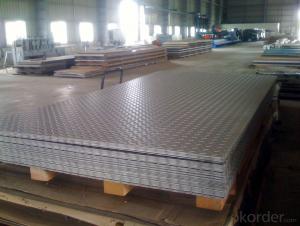Color Stainless Steel Sheet with No.4 Surface Treatment
- Loading Port:
- Shanghai
- Payment Terms:
- TT OR LC
- Min Order Qty:
- 500 m.t.
- Supply Capability:
- 5000000 m.t./month
OKorder Service Pledge
OKorder Financial Service
You Might Also Like
Hot sale stainless steel sheet 201/202/304/304l/310S/309S/316L/316Ti/316/321/410/420/430/444/443/409L,and 904L.
Description of Stainless Steel Sheet:
Description | steel sheet,hot rolled steel sheet,cold rolled steel sheet, steel sheet,sheet,steel plate |
Standard | ASME, ASTM, EN ,BS,GB,DIN, JIS etc |
Application | Steel sheet applies to construction field, ships building industry, petroleum & chemical industries, war and electricity industries, food processing and medical industry, boiler heat exchanger, machinery and hardware fields. |
Packaging | Standard export sea-worthy packing |
Delivery time | 10-30 days |
Quality | No.1 |
Productivity | 500 tons/Day |
Note | Our company has cooperative relation between the domestic agents. Stainless steel sheet can be made accordingto the customers requirements. Fasten delivery. Quality assured. |
Contacts | If you have any question,please feel free contact me. |
Stainless steel sheet surface finish characteristics
Surface finish | Characteristics and application |
2B | The surface brightness and flatness of no2B is better than no2D. then through a special surface treatment to improve its mechanical properties,No2B could nearly satisfy comprehensive uses. |
No.1 | Polished with abrasive belt of grit#100-#200, have better brightness with discontinuous coarse stria, used as inner and external ornaments for building, electrical appliances and kitchen utensils etc. |
No.4 | Polished with abrasive belt of grit #150-#180,have better brightness with discontinuous coarse stria, but thinner than No3, are used as bathtub buildings inner and external ornaments electrical appliances kitchen utensils and food processing equipment etc. |
HL | Polished with abrasive belt of grit #150-#320 on the NO.4 finish and has continuous streaks, mainly used as buildings ornaments elevators, door of building, frontal plate etc. |
BA | Cold rolled, bright annealed and skin-passed, the product have excellent brightness and good reflexivity like mirror, kitchen apparatus, ornament etc. |
8K | The product have excellent brightness and prefer reflexivity can to be the mirror. |
Main Features of stainless steel sheet :
•Escalator, Elevator, Doors
•Furniture
•Production tools, Kitchen appliances, freezers, cold rooms
•Auto Parts
•Machinery and Packaging
•Equipment and Medical devices
•Transport system
Product Details:
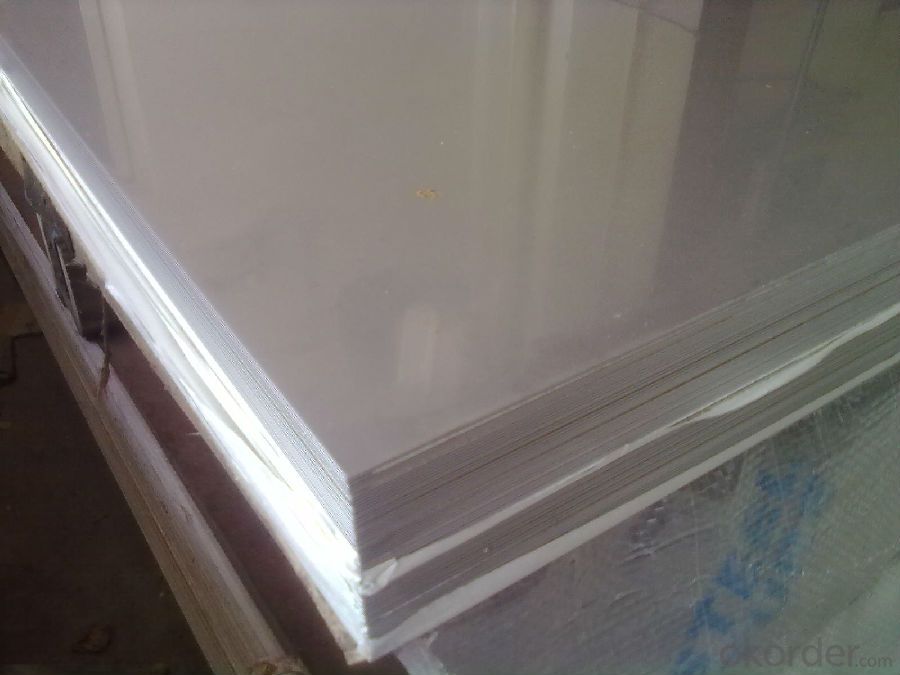

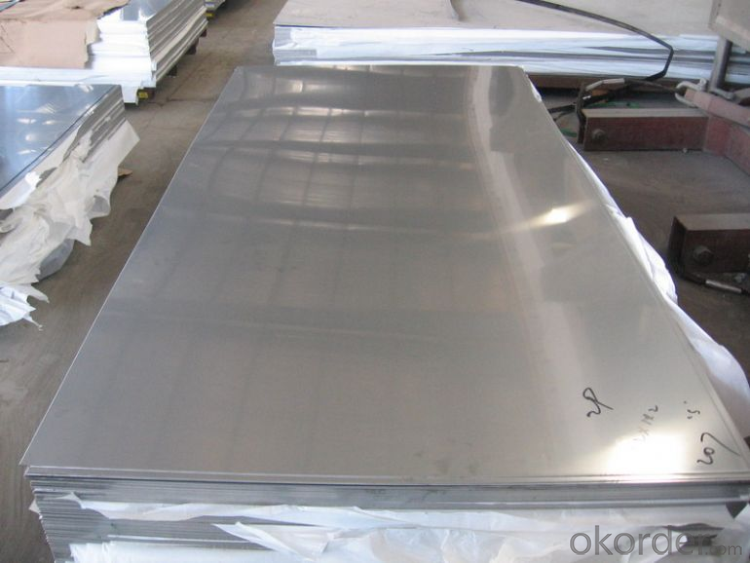



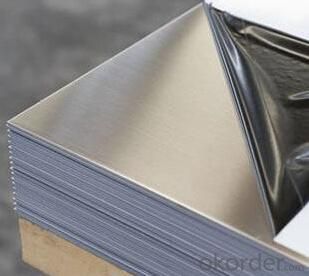
Cold Rolled and Hot Rolled:

Packing and Loading:
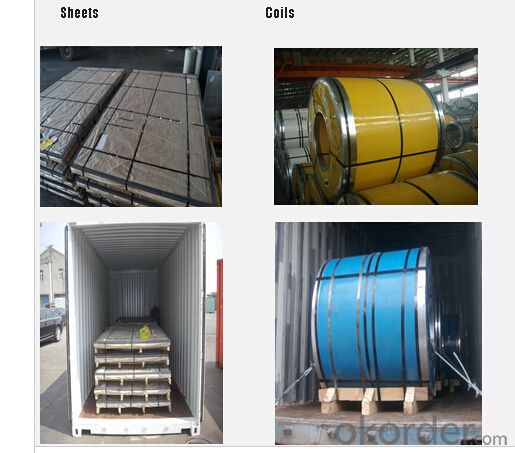
FAQ:
1. What's the quality?
Very fine, we have been exported to more than 30 countries.
2. How long get reply?
Usually within 24 hours
If you have any question about stainless steel sheets, do not forget to send the email to us! You will get the competitive Price and have a very good experience about the Buying Process! CNBM International Corporation is always your trustful friend!
- Q: How do I prevent crevice corrosion on stainless steel sheets?
- To prevent crevice corrosion on stainless steel sheets, it is important to keep them clean and free from contaminants. Regularly cleaning the sheets with a mild detergent and water, followed by thorough drying, can help remove any corrosive agents. Additionally, ensuring proper ventilation and avoiding prolonged exposure to high humidity or stagnant conditions can minimize the risk of crevice corrosion. Applying a protective coating or using corrosion inhibitors specifically designed for stainless steel can provide an extra layer of protection against crevice corrosion.
- Q: Are stainless steel sheets resistant to corrosion?
- Yes, stainless steel sheets are generally highly resistant to corrosion due to the presence of chromium in their composition, which forms a protective oxide layer on the surface. This oxide layer acts as a barrier, preventing the metal from being exposed to corrosive elements and ensuring its durability in various environments.
- Q: Can stainless steel sheets be used for roofing applications?
- Yes, stainless steel sheets can be used for roofing applications. Stainless steel is a durable and corrosion-resistant material, making it suitable for outdoor use and protecting against weather elements. It offers excellent strength and longevity, making it a popular choice for roofing in both commercial and residential settings.
- Q: Do stainless steel sheets require any special handling or storage?
- Special handling and storage are necessary for maintaining the quality and preventing damage of stainless steel sheets. Consider the following essential points: 1. Gloves must be worn while handling stainless steel sheets to prevent leaving fingerprints and oils on the surface, which can cause corrosion. Moreover, sharp tools should be avoided to prevent any surface scratching. 2. To avoid rust or corrosion during storage, stainless steel sheets should be thoroughly cleaned to remove dirt, debris, and moisture. Cleaning can be done using mild soap or a specialized stainless steel cleaner. 3. It is crucial to store stainless steel sheets in a clean, dry, and well-ventilated area. Direct sunlight, extreme temperatures, and moisture should be avoided as they can lead to corrosion. Ideally, the sheets should be stored in a covered area or wrapped in protective materials like plastic or cloth to prevent scratches and damage. 4. Sheets should be separated to prevent contact and potential scratching or damage. This can be achieved by using dividers or interleaf papers between the sheets. 5. When moving or transporting stainless steel sheets, it is advisable to use appropriate handling equipment such as forklifts or cranes. This ensures safe and secure movement without causing any dents or scratches. By adhering to these guidelines for handling and storage, stainless steel sheets can be effectively protected and maintained in optimal condition for their intended use.
- Q: Are stainless steel sheets good for pressure vessels?
- Stainless steel sheets have gained popularity as a preferred choice for pressure vessels due to their durability, reliability, and ability to meet the demanding requirements of such applications. Commonly employed, they are considered to be an excellent option. Stainless steel possesses exceptional resistance to corrosion, high strength, and commendable mechanical properties, rendering it suitable for applications that necessitate withstanding high pressures. Moreover, stainless steel exhibits remarkable heat resistance, a pivotal trait in pressure vessels where exposure to elevated temperatures is likely. It is also important to highlight that stainless steel lends itself to easy formation and welding, facilitating the fabrication of intricate shapes and designs required for pressure vessel construction. All in all, stainless steel sheets are a favored material for pressure vessels due to their ability to endure, their dependability, and their capacity to fulfill the demanding prerequisites of such applications.
- Q: How do I remove stains or marks from stainless steel sheets?
- To effectively eliminate stains or marks on stainless steel sheets, a few simple steps can be taken: 1. Initiate the process by cleansing the stainless steel surface with warm water and a mild detergent or dish soap. Take a soft cloth or sponge and gently scrub the affected area. Rinse thoroughly with clean water and dry with a towel. 2. If the stain persists, the utilization of white vinegar can be attempted. Dampen a cloth or sponge with vinegar and gently rub the stained area. The acidic properties of vinegar aid in breaking down the stains. Rinse the surface with water and dry it completely. 3. In the case of more stubborn stains or marks, a paste can be concocted using baking soda and water. Apply the paste to the affected area and gently rub it in using a soft cloth or sponge. Allow it to sit for a few minutes, then rinse with water and dry thoroughly. 4. Should the aforementioned methods prove ineffective, resorting to a stainless steel cleaner specifically designed for stain or mark removal is advisable. Adhere to the instructions on the cleaner's packaging for optimal results. Remember to rinse the surface thoroughly and ensure complete drying after employing a commercial cleaner. 5. It is essential to refrain from using abrasive cleaners, steel wool, or harsh chemicals on stainless steel sheets, as they possess the potential to scratch or damage the surface. Additionally, it is recommended to always test any cleaning method or product on a small, inconspicuous area before applying it to the entire surface. By adhering to these steps and utilizing appropriate cleaning methods, stains or marks can be effectively eradicated from stainless steel sheets, thereby restoring their original shine and appearance.
- Q: Are stainless steel sheets suitable for architectural handrails or guardrails?
- Yes, stainless steel sheets are highly suitable for architectural handrails or guardrails. Stainless steel is a popular choice for these applications due to its excellent strength, durability, and corrosion resistance properties. It is able to withstand various weather conditions and is resistant to rust, making it ideal for outdoor installations. Stainless steel sheets can be easily customized and fabricated into different shapes and sizes, allowing for flexibility in design. Additionally, stainless steel has an aesthetic appeal that complements modern architectural designs. It is a low-maintenance material that requires minimal upkeep, making it a cost-effective choice in the long run. Overall, stainless steel sheets are a reliable and versatile option for architectural handrails or guardrails.
- Q: Are stainless steel sheets resistant to saltwater corrosion?
- Yes, stainless steel sheets are highly resistant to saltwater corrosion due to their composition, which includes chromium that forms a protective oxide layer on the surface, preventing corrosion when exposed to saltwater.
- Q: What is the maximum thickness available for stainless steel sheets?
- The specific grade of stainless steel and the manufacturing capabilities of the supplier can cause the maximum thickness of stainless steel sheets to differ. Nevertheless, stainless steel sheets are commonly available in thicknesses ranging from 0.5mm to 80mm. It should be emphasized that thicker sheets are typically utilized for specialized purposes that demand heightened strength and durability, like construction projects or heavy machinery. To ensure the desired thickness is obtainable, it is essential to carefully consider the intended use of the stainless steel sheets and seek advice from a reputable supplier.
- Q: What are the different types of punched finishes available for stainless steel sheets?
- There are several different types of punched finishes available for stainless steel sheets, each offering unique characteristics and benefits. Some of the most common punched finishes include: 1. Round Hole: This is the most basic and widely used punched finish. It features evenly spaced round holes that provide good airflow and visibility. It is commonly used in applications such as ventilation systems, decorative panels, and filters. 2. Square Hole: Similar to round hole punched finish, square hole punched finish offers a clean and modern look. It is often preferred when a more geometric pattern is desired. Square hole punched sheets are commonly used in architectural applications, screens, and fencing. 3. Slotted Hole: Slotted hole punched finish is characterized by elongated holes that provide larger openings for increased visibility or improved drainage. It is commonly used in applications such as grilles, sunshades, and safety barriers. 4. Hexagonal Hole: Hexagonal hole punched finish features hexagon-shaped holes that offer a unique and aesthetically pleasing pattern. It is commonly used in decorative applications, such as wall cladding, signage, and artistic installations. 5. Decorative Patterns: In addition to the standard punched finishes, there are various decorative patterns available for stainless steel sheets. These patterns can include custom designs, logos, or intricate shapes, adding a personalized touch to any project. The choice of punched finish depends on the specific requirements of the application, including aesthetics, functionality, and performance. It is important to consider factors such as hole size, open area percentage, strength, and corrosion resistance when selecting the appropriate punched finish for stainless steel sheets.
Send your message to us
Color Stainless Steel Sheet with No.4 Surface Treatment
- Loading Port:
- Shanghai
- Payment Terms:
- TT OR LC
- Min Order Qty:
- 500 m.t.
- Supply Capability:
- 5000000 m.t./month
OKorder Service Pledge
OKorder Financial Service
Similar products
Hot products
Hot Searches
Related keywords
